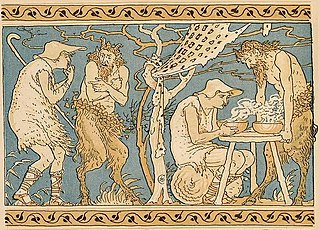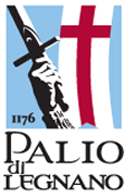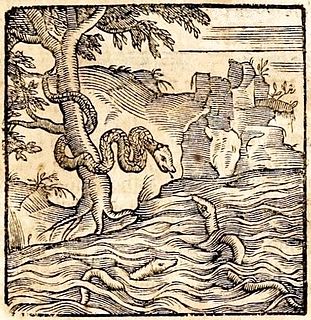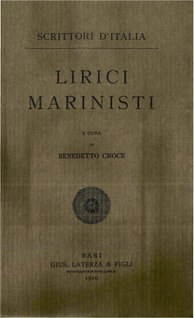
Giovanni Maria Verdizotti was a well-connected writer and artist who was born in Venice in 1525 and died there in 1600.

Giovanni Maria Verdizotti was a well-connected writer and artist who was born in Venice in 1525 and died there in 1600.
As an artist, Verdizotti is mainly remembered for his friendship with Titian, whose pupil he was, and later his secretary from 1556. No painted work can be attributed with certainty to him but, judging from the prints in his "100 Moral Fables" (Cento favole morali), his speciality was small landscapes with tiny figures. There is a signed pen and ink drawing by him of Cephalus and Procris (Brunswick, Herzog Anton Ulrich-Museum), which resembles Titian's graphic style. Other drawings attributed to Verdizotti are a pen and ink Landscape with Houses (Milan, Biblioteca Ambrosiana) and the Titian-like Study of a Tree (Madrid, Real Academia de Bellas Artes de San Fernando). He probably also executed the pen and wash drawing of "A Bear Devouring a Rabbit in a Landscape" (Florence, Uffizi), which has as motto naturam ars vincit, a work close in style to the woodcuts that illustrate his fables. Similarly, the supposed ink portrait of Titian (Haarlem, Teyler's Museum) is close to the "Cephalus and Procris". [1]
Verdizotti's poetic work includes a translation into ottava rima of the second book of the Aeneid (1560) and a chivalric romance, Del L'Aspramonte (1594). His most celebrated work was the "100 Moral Fables", valued as much for the beauty of his woodprints as for the verse and the interesting choice of subjects. According to Ruth Mortimer, [2] he was probably influenced by Gabriele Faerno's Centum Fabulae (1563), the engravings in which are considered as being by Titian and which Verdizotti may have seen in preparation. Among Verdizotti's fables, 37 of Faerno's subjects do not appear, the rejected texts dealing mainly with men and gods. His preference is for animal fables but he also added the Biblical "The Trees and the Bramble".
In 1597 Verdizotti published a prose "Lives of the Holy Fathers" (Vite de Santi Padri) in which he mentioned that he had a canonry at Castelcucco, near Treviso.

Tiziano Vecelli or Vecellio, known in English as Titian, was an Italian painter during the Renaissance, considered the most important member of the 16th-century Venetian school. He was born in Pieve di Cadore, near Belluno,. During his lifetime he was often called da Cadore, 'from Cadore', taken from his native region.

Paolo Caliari, known as Paolo Veronese, was an Italian Renaissance painter based in Venice, known for extremely large history paintings of religion and mythology, such as The Wedding at Cana (1563) and The Feast in the House of Levi (1573). Included with Titian, a generation older, and Tintoretto, a decade senior, Veronese is one of the "great trio that dominated Venetian painting of the cinquecento" and the Late Renaissance in the 16th century. Known as a supreme colorist, and after an early period with Mannerism, Paolo Veronese developed a naturalist style of painting, influenced by Titian.
The Viareggio Prize is an Italian literary prize, first awarded in 1930. Named after the Tuscan city of Viareggio, it was conceived by three friends, Alberto Colantuoni, Carlo Salsa and Leonida Rèpaci, to rival the Milanese Bagutta Prize.

Cesare Cantù was an Italian historian.

Italian opera is both the art of opera in Italy and opera in the Italian language. Opera was born in Italy around the year 1600 and Italian opera has continued to play a dominant role in the history of the form until the present day. Many famous operas in Italian were written by foreign composers, including Handel, Gluck and Mozart. Works by native Italian composers of the 19th and early 20th centuries, such as Rossini, Bellini, Donizetti, Verdi and Puccini, are amongst the most famous operas ever written and today are performed in opera houses across the world.
A wolf in sheep's clothing is an idiom of Biblical origin used to describe those playing a role contrary to their real character with whom contact is dangerous, particularly false teachers. Much later, the idiom has been applied by zoologists to varying kinds of predatory behaviour. A fable based on it has been falsely credited to Aesop and is now numbered 451 in the Perry Index. The confusion has arisen from the similarity of the theme with fables of Aesop concerning wolves that are mistakenly trusted by shepherds; the moral drawn from these is that one's basic nature eventually shows through the disguise.

The Marciana Library or Library of Saint Mark is a public library in Venice, Italy. It is one of the earliest surviving public libraries and repositories for manuscripts in Italy and holds one the world's most significant collections of classical texts. It is named after St Mark, the patron saint of the city.

Antonio Randa was an Italian painter of the classicist period, active in Ferrara, Modena, Rovigo, Florence, Comacchio and his native Bologna.

The Diocese of Cremona is a Roman Catholic ecclesiastical territory in northern Italy, a suffragan of the Archdiocese of Milan. The bishop's seat is in the Cathedral of the Assumption of the Virgin Mary.

The miller, his son and the donkey is a widely dispersed fable, number 721 in the Perry Index and number 1215 in the Aarne–Thompson classification systems of folklore narratives. Though it may have ancient analogues, the earliest extant version is in the work of the 13th-century Arab writer Ibn Said. There are many eastern versions of the tale and in Europe it was included in a number of Mediaeval collections. Since then it has been frequently included in collections of Aesop's fables as well as the influential Fables of Jean de la Fontaine.
The drowned woman and her husband is a story found in Mediaeval jest-books that entered the fable tradition in the 16th century. It was occasionally included in collections of Aesop's Fables but never became established as such and has no number in the Perry Index. Folk variants in which a contrary wife is sought upstream by her husband after she drowns are catalogued under the Aarne-Thompson classification system as type 1365A.

The Satyr and the Traveller is one of Aesop's Fables and is numbered 35 in the Perry Index. The popular idiom 'to blow hot and cold' is associated with it and the fable is read as a warning against duplicity.

The Carracci were a Bolognese family of artists that played an instrumental role in bringing forth the Baroque style in painting. Brothers Annibale (1560–1609) and Agostino (1557–1602) along with their cousin Ludovico (1555–1619) worked collaboratively. The Carracci family left their legacy in art theory by starting a school for artists in 1582. The school was called the Accademia degli Incamminati, and its main focus was to oppose and challenge Mannerist artistic practices and principles in order to create a renewed art of naturalism and expressive persuasion.

The church of Santi Severino e Sossio and the annexed monastery are located on via Bartolommeo Capasso in Naples, Italy.

The Palio di Legnano is a folk event generally held on the last Sunday of May in the City Of Legnano, Italy, to recall the Battle of Legnano held on May 29, 1176 by the Lombard League and the Holy Roman Empire of Frederick Barbarossa. This Palio is composed by a medieval pageant and a horse race. Until 2005 the whole event was named Sagra del Carroccio.

The classical legend that the swan sings at death was incorporated into one of Aesop's Fables, numbered 399 in the Perry Index. The fable also introduces the proverbial antithesis between the swan and the goose that gave rise to such sayings as ‘Every man thinks his own geese are swans’, in reference to blind partiality, and 'All his swans are turned to geese', referring to a reverse of fortune.

The fable of the Eel and the Snake was originated by Laurentius Abstemius in his Hecatomythium (1490). Versions of it appeared in several European languages afterwards and in collections associated with Aesop’s Fables.

The Scrittori d'Italia was an Italian book collection, published by Gius. Laterza & figli from 1910 to 1987 in Bari. The series was born with the intent to define and explain a cultural canon of the new Italy, disassociating from a culture yet considered too much based on the classic of the humanism, and choosing to represent also the civil history of the newborn Italian State. The original work plan included 660 volumes, of which 287 were actually published for a total of 179 works.

Antonio Mongitore was a Sicilian presbyter, historian and writer, known for his works about the history of Sicily. He was also canon of the cathedral chapter of Palermo.

The Fontana or Fontanone di Ponte Sisto, once known as the Fontanone dei Cento Preti, is an early 17th-century, monumental fountain now located in Piazza Trilussa, facing the south end of the Ponte Sisto, in Trastevere, Rome, Italy. It was reconstructed here in the late 19th century, originally erected across the river, attached to the former building of the Collegio Ecclesiastico.
| Wikimedia Commons has media related to Giovanni Maria Verdizotti . |